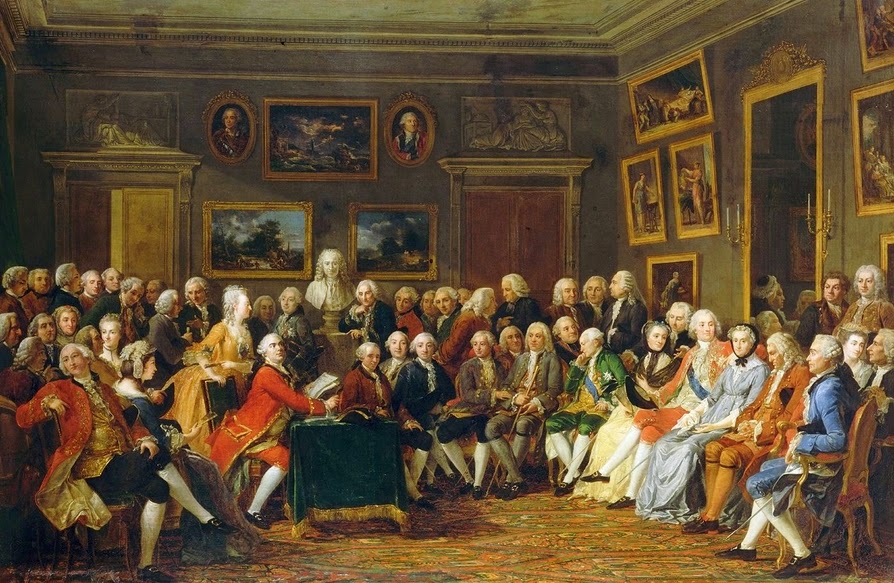Henri Le Sidaner
Autumn Evening, 1895
***
Like other species, artists club together in movements not just for purposes of identification but for longevity. Individuals who don’t belong to schools take longer establishing reputations during their lifetimes, and tend to lose them sooner after their deaths.
Henri Le Sidaner (1862–1939) was one such individual: a contemporary of the Post-Impressionists who painted in dots but was not a Pointillist; revelled in complementary colours but was not a Fauve; and drew a veil of dreams over reality but was not a Symbolist, or only briefly. He was, as his friend the critic Gabriel Mourey described him, ‘a sort of mystic who has no faith’. When asked what school he belonged to, his own reply was: ‘None. But if you absolutely insist on categorising me, I am an intimist.’
If you’ve never heard of Le Sidaner, this may be why. But now the artist posthumously dismissed by the great Post-Impressionist scholar John Rewald as a fabricator of ‘post office calendar landscapes painted in petit point’ is emerging from the shadows with a major retrospective across Pas de Calais in four museums — at Cambrai, Le Touquet, Étaples and Dunkirk — along the Côte d’Opale, whose sleepy little towns first inspired his brush and whose opalescent light infused his palette.
House by the river in full moon, 1920
***
Balustrade - The Terrace Door, 1924
***
Born in Mauritius, where his father was a ship inspector for Lloyd’s, Le Sidaner moved with his family to Dunkirk at the age of ten and got into the École des Beaux-Arts in Paris, after several attempts, at the age of 20. He was not a prodigy and Paris felt to him like a prison, from which he escaped to the fishing port of Étaples in 1885, plunging gratefully into its ‘bath of air and light’. Here he produced small paintings of peasant girls in the sentimental realist style of Bastien-Lepage for the popular market, and large canvases of social realist subjects for the Salon in the melancholy Symbolist vein, then fashionable with fin-de-siècle painters from Newlyn to Milan.
But it was in the medieval backwater of Bruges, where he eloped in 1898 with the young Parisian Camille Navarre who would become his wife, that he developed his personal brand of melancholy. In the nocturne he found an effect of light sidelined by Impressionism, and made it his own. The brushwork of his ‘Église au clair de lune, Buicourt’ (1904) is as muzzy as a late painting by Monet, but there’s an observational reason for it — as is clear from the pinprick-sharp gaze of his self-portrait of 1892— he was not myopic.
Rewald was right about calendars in one respect: Le Sidaner’s trademark motif of a single window lit at dusk reminds one of nothing so much as an Advent calendar on the first day of December. He is the master of the penumbra, the crepuscule of velvety darkness so soft and thick you could almost touch it, illuminated by a clair de lune, by starlight reflected off snow or the glow of that solitary lamp burning in a window — filtered through shutter slats in ‘Les Volets Clos, Versailles’ (1938). His palette was anathema to the Pointillists. If, as Signac insisted, ‘the enemy of all paintings is grey’, then Le Sidaner slept with the enemy all his painting life. It wasn’t that he didn’t do colour — the red of ‘La Nappe rouge, Versailles’ (1931) is as saturated as you could find in any painting by Bonnard or even Matisse — but that his colours are always diffused in an opal light that falls through the picture space like soft rain. He was as interested as Seurat in perception, but the science of optics left him cold. The point of his dots was to make his picture surfaces tremble like images hovering on the edge of perception.

Claire de lune, date unkonwn
***
In successful middle-age, when he summered at Gerberoy and wintered at Versailles, Le Sidaner built a following in Britain and America for his paintings of domesticated nature. His seductive views of the gardens he created in the ruins of a medieval fortress at Gerberoy, with their recently vacated tables dappled in sunlight and overhung by roses, would shift a lot of calendars. His ‘La Table, Harmonie blanche’ (1927) is a study in white worthy of Whistler, with a somnolent tea set doing service for the dreamy young girls.
Harmonie blanche , 1927
***
In "L'Eveche Chartres" you can almost see the last light of a late autumn afternoon moving indoors. The colors coalesce around the door, like guests gathering.
L'Eveche Chartres, 1913
***
‘You could blow on this crepuscular vision and it would vanish,’ the critic of Le Figaro commented on one of his works. The vision has proved more durable than it looked..







